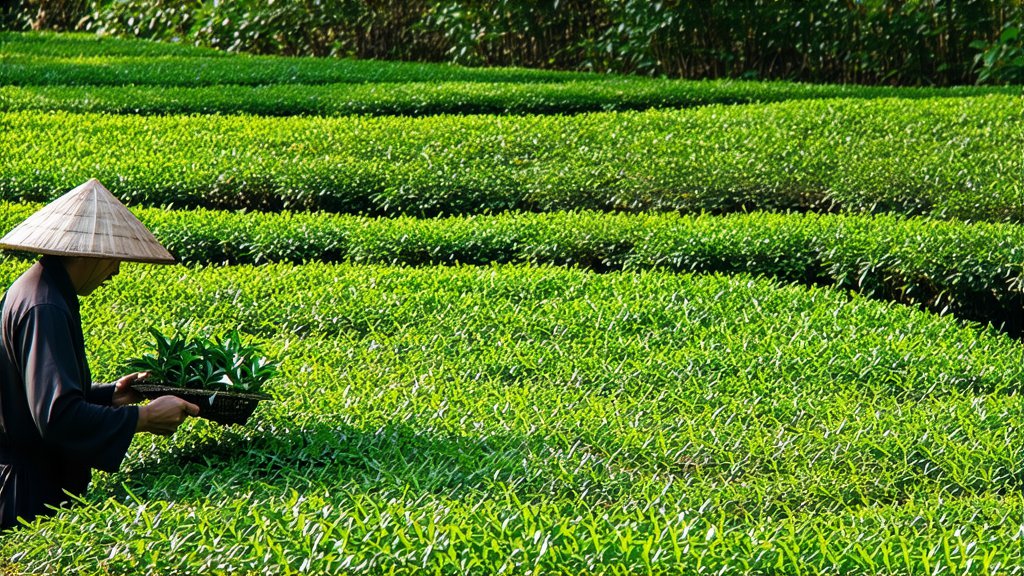
Nestled within the mist-shrouded mountains of Anhui province lies the birthplace of one of China's most exquisite teas – Huangshan Maofeng. This yellow tea, often referred to as "Golden Peak," embodies the essence of traditional Chinese tea culture and showcases the meticulous craftsmanship that goes into creating this rare delicacy. In this article, we delve into the historical background, varieties, production process, and the art of appreciating Huangshan Maofeng, offering an insightful journey for international readers eager to explore the depths of Chinese tea heritage.
Historical Background
The origins of Huangshan Maofeng can be traced back to the Tang Dynasty (618-907 AD), a period marked by significant advancements in tea culture and trade. It was during this era that tea became not only a beverage but also an integral part of social rituals and intellectual discourse. The name "Huangshan Maofeng" translates to "Yellow Mountain Peak," referencing its geographical roots in the Yellow Mountains (Huangshan), which have long been revered for their breathtaking landscapes and spiritual significance. Over centuries, this region has nurtured a unique microclimate conducive to growing high-quality tea, making it a treasure trove for tea enthusiasts.
Varieties of Huangshan Maofeng
While all Huangshan Maofeng shares certain characteristics, there are subtle variations based on factors such as altitude, soil composition, and the specific cultivar used. The two main types are 'Yumu' (mother tree) and 'Zhengyuan' (genuine source). Yumu refers to tea grown from original wild tea trees found in the region, while Zhengyuan denotes tea cultivated from selected seedlings propagated from these ancient trees. Each type imparts distinct flavor profiles, with Yumu often being more robust and complex due to its genetic diversity, whereas Zhengyuan is prized for its consistency and refined taste.
Production Process
The journey from leaf to cup for Huangshan Maofeng involves several intricate steps designed to preserve its delicate flavors and aromas:
-
Harvesting: Picking is typically done in early spring when the first flush of buds and leaves emerge, ensuring optimal freshness and sweetness. Only the top one or two leaves and the bud are selected, guaranteeing the finest quality.
-
Withering: Freshly picked leaves undergo a gentle withering process, either spread thinly on bamboo trays or hung indoors, allowing them to lose excess moisture gradually without direct sunlight.
-
Fixation: Unlike other teas that undergo immediate pan-firing or steaming, Huangshan Maofeng follows a unique method called "sealing yellow." This involves lightly steaming or baking the leaves at low temperatures to inhibit enzyme activity partially, giving rise to its characteristic yellow color and mellow taste.
-
Rolling and Shaping: The softened leaves are then rolled manually or using specialized machines to shape them into tight pellets or twisted strands, enhancing both aesthetic appeal and infusion efficiency.
-
Drying: Finally, the shaped tea is dried slowly over charcoal fires or in ovens, ensuring complete moisture removal while preserving its natural fragrance.
Appreciating Huangshan Maofeng
To truly savor the nuances of Huangshan Maofeng, one must engage in a mindful tasting experience that encompasses sight, smell, taste, and even sound:
-
Visual Appeal: Observe the dry leaves for their uniformity in size and shape, and note the vibrant yellow-green hue. Upon infusion, watch how they unfurl gracefully, revealing a golden-amber liquor.
-
Aromatic Experience: Before taking a sip, inhale deeply to appreciate the subtle floral and fruity notes intertwined with hints of earthiness and sweetness.
-
Tasting Sensations: Take small sips, allowing the tea to coat your palate fully. Notice the smooth texture and balanced flavors, ranging from mildly sweet to slightly vegetal, with a lingering aftertaste that speaks of its mountainous origins.
-
Sound of Sipping: As you drink, listen to the quiet rustle of the leaves in the cup, a testament to the care taken in every step of their creation.
In conclusion, Huangshan Maofeng stands as a testament to China's rich tea heritage, embodying centuries of tradition, meticulous craftsmanship, and a deep connection to nature. Its unique production process and distinctive character make it a sought-after treasure among tea connoisseurs worldwide. By understanding its history, exploring its varieties, and mastering the art of appreciation, one can embark on a sensory journey that transcends borders and connects us all through the shared love of this timeless beverage.